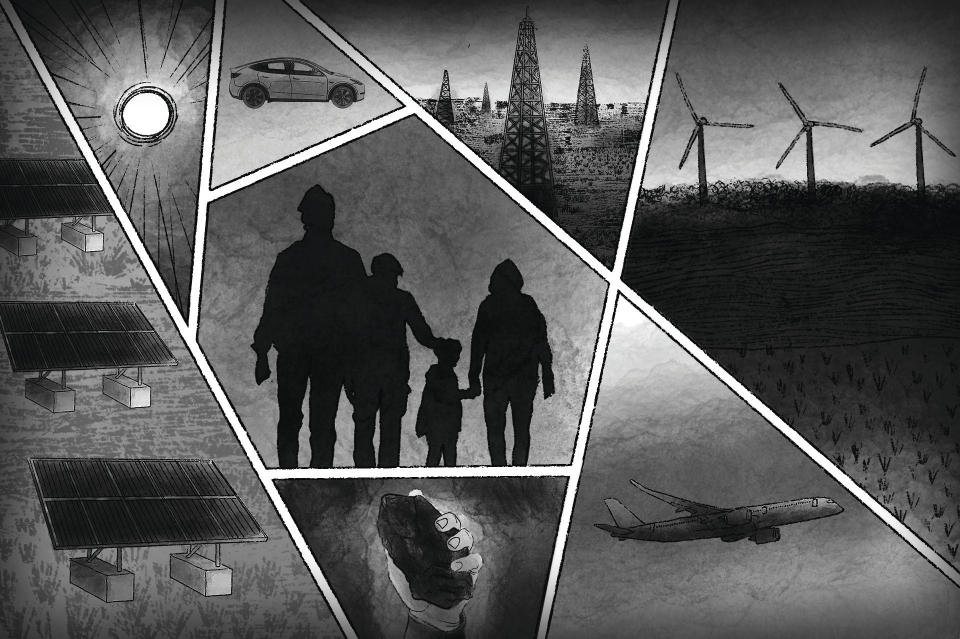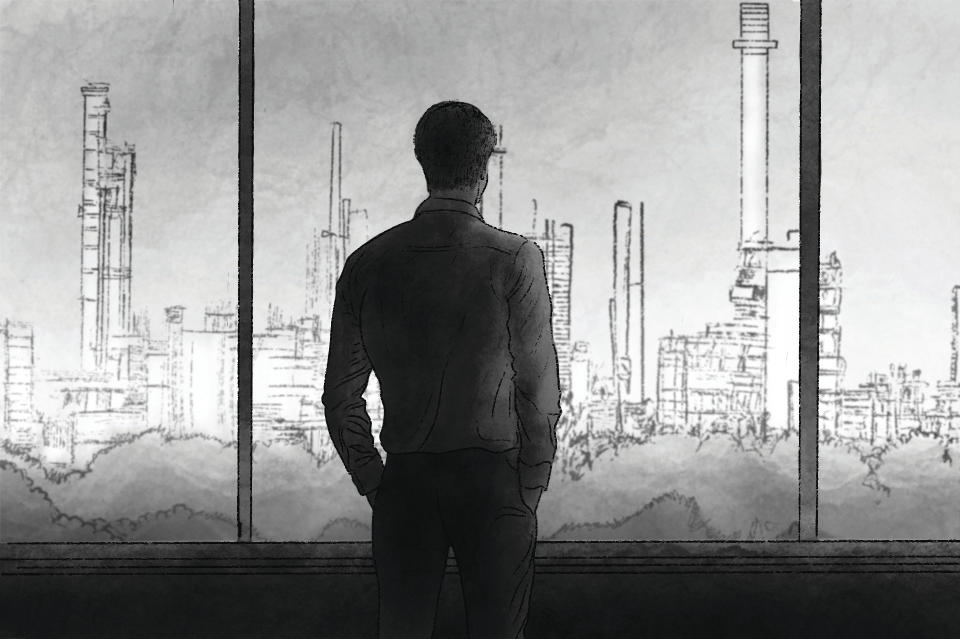How did humans get to the brink of crashing climate? A long push for progress and energy to fuel it
- Oops!Something went wrong.Please try again later.
Amid record-high temperatures, deluges, droughts and wildfires, leaders are convening for another round of United Nations climate talks later this month that seek to curb a centuries-long trend of humans spewing ever more greenhouse gases into the atmosphere.
For hundreds of years, people have shaped the world around them for their benefit: They drained lakes, deforested lands and mined for metals and minerals to grow wealth and economies. They dug up billions of tons of coal, and then oil and gas, to fuel empires and economies. The allure of exploiting nature and burning fossil fuels as a path to prosperity hopped from nation to nation, each eager to secure their own cheap energy. Over hundreds of years, that impulse has remade the planet’s climate, too — and brought its inhabitants to the brink of catastrophe.
Anya Zilberstein, a historian of climate science at Concordia University in Montreal, highlighted Europeans colonizing the Americas in the 16th and 17th centuries as major factor of today's climate and environmental crises.
“They bring with them this idea that conquest and then the development of the cultivation of landscapes, like taking down trees, opening up lands to European-style agriculture, that the draining of swamps ... will also change the climate, usually for the better,” Zilberstein said.
Jan Golinski, a professor of history at the University of New Hampshire, said Europeans of the time thought that their changes — cutting down forests, draining swamps, plowing land — would change the climate as well, to something closer to their homelands. He said they saw this engineering as positive.
“They believed that their society was making progress,” Golinski said.
That early modern period solidified notions of industry, progress, productivity and growth that make it harder to tackle the current climate crisis, Zilberstein said.
Then, in the 18th and 19th centuries, the balance tipped dramatically in coal's favor as an energy source, through technological advances like steam power, new transportation routes like canals and later railroads, and a desire to better control how, when and where energy was used.
Steam power made it easier for factory owners to control labor and nature than an economy based on water power, for example, because they could be set up anywhere and weren't vulnerable to floods or droughts said Andreas Malm, an associate professor of human ecology at Lund University in Sweden.
The British then "forcibly exported this model and integrated other countries such as India or Egypt or what became Nigeria into a kind of an economy that was dependent on fossil fuel,” said Malm.
Other nations then began "searching for fossil fuels in various places in the Ottoman Empire, in the Indian subcontinent and elsewhere,” said On Barak, a historian at Tel Aviv University and co-founder of the Laboratory for the History of Climate Change.
Then came oil. Oil use grew in the late 19th century because it wasn’t as labor-intensive as coal, whose workers now had strong unions in some Western nations, historians say.
Like coal, oil was easy to store, it's more energy-rich than coal, and it’s easier to move; as a liquid it can be shipped through pipes, as well as by trucks, tankers and railcars, said J.R. McNeill, a historian at Georgetown University.
By the 20th century, the growth in oil helped fuel technologies like cars and air travel that became more affordable in many global north countries. Other nations such as China, Japan and India began assembling their own energy regimes based on fossil fuels.
As Europe, the U.S. and Japan built their energy systems around internal combustion engines, it made the global investment in an oil-dominated fossil fuel regime “gigantic and harder, but not impossible, to reverse or replace,” McNeill said.
Meanwhile, coal kept its place in the global economy.
In China and Japan, growing consumption was a signal and barometer of developing economies, said Victor Seow, a historian of science at Harvard University. After the Communist Revolution in 1949, the Chinese government measured growth by its production of items like cloth, electricity, wheat, iron, steel — and coal, too. Japan studied Western mining to develop their own coal fields.
China is now the world's current largest greenhouse gas emitter, although the United States still trumps it historically. India has also become a major coal-burning nation.
Fredrik Albritton Jonsson, a historian at the University of Chicago, said humans can decide what kind of world they want to live in, and tailor their development within nature's boundaries.
“There are two kinds of boundaries to this economy,” said Fredrik Albritton Jonsson, a historian at the University of Chicago. “One is a sort of upper boundary of planetary limits” of what our natural world can withstand, “and then there’s a lower boundary, that would guarantee minimum social needs, entitlements, the right to education, the right to clean water, the right to a steady income.”
___
Associated Press climate and environmental coverage receives support from several private foundations. See more about AP’s climate initiative here. The AP is solely responsible for all content.


